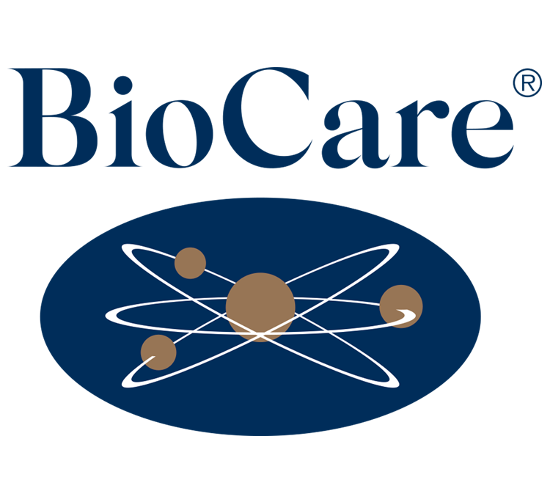We all know that vitamin D is essential for good health, but are you getting enough?
It is an essential, fat soluble nutrient which is involved in the function of each body system, not least the immune system, partly by functioning as a hormone.1 It is likely that low levels of vitamin D may play a role in many of the health issues which are unfortunately so prevalent nowadays.

Statistics show that up to 25% of the general UK population may be deficient in vitamin D.2 The body is able to produce large quantities of vitamin D when exposed to UVB light, giving vitamin D its name as the ‘sunshine vitamin’. Dietary sources include cholecalciferol (vitamin D3 from predominantly animal sources e.g. eggs, oily fish) and ergocalciferol (vitamin D2, from plant sources e.g. mushrooms, tofu). In the modern world, it is common to spend extensive time indoors, overuse sunscreen, and have a poor quality diet lacking in these foods, all of which can contribute to low levels of vitamin D. Certain individuals may be especially vulnerable to deficiency, including:
- Those who follow a vegan or vegetarian diet3
- Pregnant and breastfeeding women
- Breast-fed infants and young children
- Individuals with dark4 or covered skin5
- People with digestive impairments, such as Inflammatory Bowel Disease (IBD) or fat malabsorption disorders such as gallbladder removal/dysfunction.6
- The elderly, since vitamin D synthesis in the skin becomes less efficient with advancing age7
- People taking medications that can significantly deplete vitamin D status e.g. steroids8 and fat blocking medications used for weight loss (e.g. Orlistat9).
For example, if you’re on a few medications, your work life is leaving you stressed and tired with a few bugs going around at home, you may benefit from some vitamin D.

So, why is vitamin D essential to health, and why can vitamin D deficiency be so detrimental to our health and wellbeing?
- Sex hormones: vitamin D may have a beneficial effect on Premenstrual Syndrome (PMS) according to preliminary research.10,11 On the other end of the spectrum, having excess androgens (e.g. testosterone), which is linked with various conditions such as polycystic ovary syndrome (PCOS),12 can also be supported by vitamin D, with research showing that vitamin D may help reduce these levels.13
- Energy: vitamin D deficiency is associated with pronounced fatigue, with individuals suffering from chronic fatigue syndrome showing low levels of vitamin D in research.14
- Structure: menopausal women are at risk of conditions such as osteoporosis or osteopenia due to the decline in oestrogen. Given that vitamin D is essential for bone health,15 it can be a great idea to increase intake as a preventative measure for perimenopause. Vitamin D may also be supportive for severe hair loss conditions such as alopecia,16 alongside measures to support stress since it is a common driver of hair problems.17
- Nervous System: vitamin D has the potential to protect nerve cells18 and support conditions such as MS,19 depression,20 and cognitive decline.21 Vitamin D deficiency may also decrease levels of dopamine, a neurotransmitter involved in our emotions and pleasure. Mood swings and psychological disorders such as bipolar may consequently be related to low vitamin D.22
- Immunity: vitamin D can reduce the risk of infection23 in those with autoimmunity, modulate the underlying disease process and reduce the risk of developing it in the first place.24 Individuals with rheumatoid arthritis may benefit from increased dietary and supplementary intake to help them manage their symptoms.25 The anti-inflammatory properties of vitamin D can also be useful for conditions such as eczema,26 with research showing that low maternal vitamin D intake may increase the likelihood of allergies in offspring.27
- Digestion: a more permeable gut wall (so-called ‘Leaky Gut), driven by gluten and lectins, contributes to an impaired immune system.28 Vitamin D may support healthy junctions in the gut lining and the healing process,29 alongside other nutrients such as zinc,30 vitamin A,31 and L-glutamine.32 Poor vitamin D status is also associated with an increased risk of chronic digestive conditions, notably Crohn’s Disease33 and Ulcerative Colitis.34
As you can see, vitamin D deserves its place in the nutritional first aid kit.
Got a question?
The brand you can talk to:
We have a team of Nutritionists at the end of our advice line, open to you, for product support and advice (5 days a week). 0121 433 8702 or clinicalnutrition@biocare.co.uk
Or head to our advice page where you can find Healthnotes.
Not registered for an account with BioCare®?
You can register now to receive up to date news, product information and exclusive offers whether you are a consumer, practitioner or retailer.
__________________________________________________________________________________________________________________________________________
1 Morris HA. Vitamin D: A Hormone for All Seasons - How much is enough? Understanding the New Pressures. Clinical Biochemist Reviews. 2005;26(1):21-32.
2 Department of Health. 2014. National Diet and Nutrition Survey: results from Years 1 to 4. Available online at: https://www.gov.uk/government/statistics/national-...
3 Outila TA et al. Dietary intake of vitamin D in premenopausal, healthy vegans was insufficient to maintain concentrations of serum 25-hydroxyvitamin D and intact parathyroid hormone within normal ranges during the winter in Finland. J Am Diet Assoc. 2000;100(4):434-41.
4 Whiting, S.J. and Calvo, M.S. (2006) Overview of the Proceedings from Experimental Biology 2005 Symposium: Optimizing Vitamin D Intake for Populations with Special Needs: Barriers to Effective Food Fortification and Supplementation. Journal of Nutrition, 136 (4), 1114-1116.
5 Hatun, S., Islam, O., Cizmecioglu, F., Kara, B., Babaoglu, K., Berk, F. and Gökalp, A.S. (2005) Subclinical Vitamin D Deficiency Is Increased in Adolescent Girls Who Wear Concealing Clothing. Journal of Nutrition, 135, 218-222.
6 Bengoa JM et al. Intestinal calcium absorption and vitamin D status in chronic cholestatic liver disease. Hepatology. 1984 Mar-Apr;4(2):261-5.
7 Holick MF et al. Age, vitamin D, and solar ultraviolet. Lancet. 1989 Nov 4;2(8671):1104-5.
8 Gröber U et al. Influence of drugs on vitamin D and calcium metabolism. Dermato-endocrinology. 2012;4(2):158-166.
9 McDuffie JR et al. Effects of orlistat on fat-soluble vitamins in obese adolescents. Pharmacotherapy. 2002
Jul;22(7):814-22.
10 Bakhshalizadeh S et al. Modulation of steroidogenesis by vitamin D3 in granulosa cells of the mouse model of polycystic ovarian syndrome. Syst Biol Reprod Med. 2017;63(3):150-161.
11 Bertone-Johnson et al. Dietary vitamin D intake, 25-hydroxyvitamin D3 levels and premenstrual syndrome in a college-aged population. J Steroid Biochem Mol Biol. 2010; 121(1-2): 434-437
12 Tsakova AD et al. 25 (OH) vitamin D levels in premenopausal women with polycystic ovary syndrome and/or obesity. Int J Vitam Nutr Res. 2012; 82 (6): 399-404.
13 Bakhshalizadeh S et al. Modulation of steroidogenesis by vitamin D3 in granulosa cells of the mouse model of polycystic ovarian syndrome. Syst Biol Reprod Med. 2017; 63 (3): 150-161.
14 Berkvitz S et al. Serum 25-hydroxy vitamin D levels in chronic fatigue syndrome: a retrospective survey. Int J Vitam Nutr Res. 2009; 79 (4): 250-4.
15 National Institutes of Health (2011) Vitamin D. [Online] Available at: http://ods.od.nih.gov/factsheets/VitaminD-HealthPr... [Accessed 2nd April 2014].
16 Aksu Cerman A et al. Vitamin D deficiency in alopecia areata. Br J Dermatol. 2014;170(6):1299-304.
17 Peters EMJ et al. Hair and stress: A pilot study of hair and cytokine balance alteration in healthy young women under major exam stress. Brandner JM, ed. PLoS ONE. 2017;12(4):e0175904.
18 Harms LR et al. Vitamin D and the brain. Best Pract Res Clin Endocrinol & Metab. 2011; 25(4): 657-669.
19 Jelinek GA et al. Latitude, sun exposure and vitamin D supplementation: associations with quality of life and disease outcomes in a large international cohort of people with multiple sclerosis. BMC Neurol. 2015; 15: 132
20 Khoraminya N et al. Therapeutic effects of vitamin D as adjunctive therapy to fluoxetine in patients with major depressive disorder. Aust N Z J Psychiatry. 2013; 47 (3): 271-5.
21 Llewellyn et al. Archives of internal medicine, 2010; 170 (13), 1135-41
22 Ahmadi S et al. Vitamin D receptor FokI genotype may modify the susceptibility to schizophrenia and bipolar mood disorder by regulation of dopamine D1 receptor gene expression. Minerva Med. 2012;103(5):383-391.
23 Aranow C. Vitamin D and the Immune System. Journal of investigative medicine?: the official publication of the American Federation for Clinical Research. 2011;59(6):881-886.
24 Kamen DL et al. Vitamin D and molecular actions on the immune system: modulation of innate and autoimmunity. Journal of molecular medicine (Berlin, Germany). 2010;88(5):441-450.
25 Kostoglou-Athanassiou I et al. Vitamin D and rheumatoid arthritis. Therapeutic Advances in Endocrinology and Metabolism. 2012;3(6):181-187.
26 Wang et al. Vitamin D deficiency is associated with diagnosis and severity of childhood atopic dermatitis. Pediatr Allergy Immunol. 2014; 25 (1): 30-5.
27 Erkkola et al. Maternal vitamin D intake during pregnancy is inversely associated with asthma and allergic rhinitis in 5-year-old children. Clin Exp Allergy. 2009; 39 (6): 875-82.
28 Vindigni SM et al. The intestinal microbiome, barrier function, and immune system in inflammatory bowel disease: a tripartite pathophysiological circuit with implications for new therapeutic directions. Therapeutic Advances in Gastroenterology. 2016;9(4):606-625.
29 Kong et al. Novel role of the vitamin D receptor in maintaining the integrity of the intestinal mucosal barrier. Am J Physiol Gastrointest Liver Physiol. 2008; 294 (1): G208-16.
30 Sturniolo GC et al. Zinc supplementation tightens “leaky gut” in Crohn’s disease. Inflamm Bowel Dis. 2001; 7 (2): 94-8.
31 Fuchs E, Green H. Regulation of terminal differentiation of cultured human keratinocytes by vitamin A. Cell. 1981; 25 (3): 617–25
32 Rapin JR et al. Possible Links between Intestinal Permeablity and Food Processing: A Potential Therapeutic Niche for Glutamine. Clinics. 2010; 65 (6): 635-43.
33 Simmons JD et al. Vitamin D receptor gene polymorphism: association with Crohn's disease susceptibility. Gut. 2000;47(2):211-4.
34 Pei FH et al. Vitamin D receptor gene polymorphism and ulcerative colitis susceptibility in Han Chinese. J Dig Dis. 2011;12(2):90-8.
---------------






